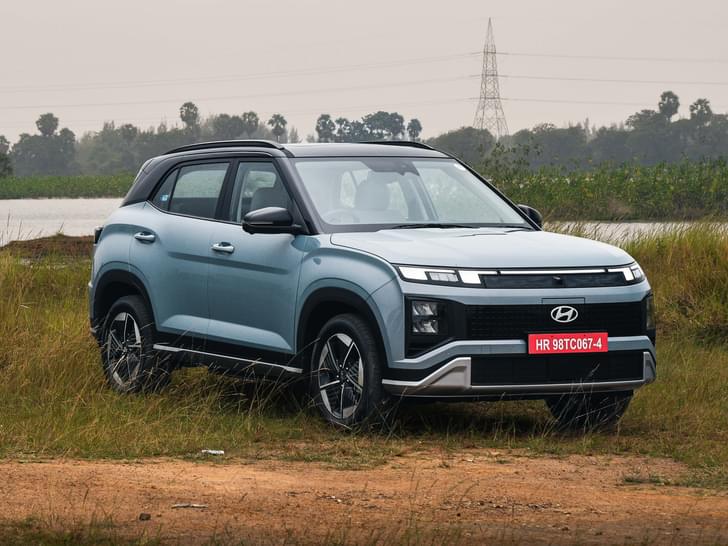Fort Kochi is blue, ochre, and green, and it’s also got this light patina that comes with having been around for centuries and pulling in explorers, traders, pirates, and conquerors from across the world. On an early December morning, it’s also warm, and it is a good thing we are exploring its narrow lanes in the all-new Hyundai i20. The all-new i20’s large windows frame once-grand mansions, young selfie seekers, and large, intricately carved wooden doors. Malayalam rock booms out of its Bose sound system, and navigating Fort Kochi is a delight, thanks to the car’s precise steering. You need very little time to understand that the all-new i20 is an accomplished car that feels just right the moment you get into it and drive the first couple of kilometres. We, of course, have a long way to go. As part of the Great India Drive, Hyundai’s annual initiative that spotlights inspirational stories from across the country, our final destination is a little village up in the hills that is on its way to becoming the country’s first carbon-neutral panchayat. The drive this year focused on Hyundai’s global vision of ‘Progress for Humanity’, and the importance of social values in the new world and the new normal.

Ahead of us lies a road that will take us past Kerala’s backwaters, a complex network of estuaries, lakes, canals and deltas of several rivers, and the once-great port city of Kozhikode. Right now, though, the iconic Chinese fishing nets — very few have withstood the ravages of time and development in Kochi — are rising from the waters, and the aroma of a robust Kerala breakfast is wafting through the air. We park the all-new i20 and decide to fuel up for the journey ahead.

The road from Kochi to Alleppey and Kottayam is lined with surreal scenes. Lush green paddy fields, the intermittent glimmer of the ocean, fresh fish whose scales glint in the sunlight, coconut groves and the backwaters… The all-new i20, which is 100kg lighter than the outgoing model, comes into its own on the highway, with its quiet but powerful 100hp, 1.5-litre CRDi engine reeling in the miles effortlessly. It’s a delight to scythe through traffic on Kerala’s narrow roads, which see dense traffic at all hours, and each time we get an opportunity to floor the pedal, the all-new i20 feels well planted as well as eager to make quick changes in direction. Its sprightliness means we reach the backwaters sooner than expected, and the early evening light accentuates the premium hatchback’s sporty, tipped-forward stance, the angular surfacing on its doors, and the attention-grabbing Z-shaped tail-lights. In every respect, this is a car in tune with the times and as much at home on our roads as the canoes are in the backwaters. By the time we exit the backwaters, it is late evening, which is rush hour at home, but here, everything unfolds at a languid pace. Toddy tappers head home after a hard day’s work, the ducks, herons and egrets fall silent, and the ripples in the waters subside. We head back to base for a grand meal of porottas with a variety of gravies.

Kochi to Kozhikode takes about five hours, but we take the longer route that hugs Kerala’s splendid coastline. It is a wise decision, leading us past pristine beaches and through little villages where the muezzin’s call to prayer is heard loud and clear; visit the sacred pond in Paravur, where St. Thomas is believed to have baptised Indian nobility in AD 52, and drive over bridges that present magnificent views of rivers the colour of jade. The journey to Kozhikode also gives us enough time to appreciate the all new i20’s user-friendly, technology-studded interiors. Thanks to a class-leading wheelbase (2,580mm), space is abundant, and our Asta model is equipped with every bell and whistle you could possibly want: from a sunroof and an onboard air purifier, to the tilt and telescopic adjust for the steering, the slick, highly responsive 10.25-inch touchscreen – an industry benchmark – and, of course, six airbags. You’d probably have heard a lot about Hyundai’s versatile BlueLink connected vehicle system, and it’s a boon not just when you are in the city, but also out exploring the country on the highways. It is dusk when we reach Kozhikode and the sun is just sinking into the waters of the Arabian Sea. Kozhikode, formerly Calicut, has had many visitors over thousands of years, including Vasco da Gama, who came calling in 1498. And looking at the ocean that is now ablaze with light, we are sure we won’t be the last.

Wayanad, a highland region in north-eastern Kerala, is a biodiversity hotspot that is threatened by climate change. The road that leads to the region girds the Western Ghats, and the all-new i20 proves adept at handling the loopy roads and hairpin bends that take us there.

Our basecamp is Wayanad Wild, which has the most comfortable beds we’ve encountered on this trip and spectacular rainforest views.

We tarry a while at the property, soaking in the scenery, and then journey to the town of Meenangadi, which is determined to bring back its dying rivers, vanishing trees and birdsong. And, in the process, become India’s first carbon-neutral panchayat.

“Even four years ago, you wouldn’t have ventured out without a sweater at 12 in the afternoon. Now, the heat is unbearable,” says Ajit Tomy, who works with the environment activist group Thanal. For the last four years, Thanal has been working with members of the Meenangadi gram panchayat to help the town realise its ‘Carbon Neutral Panchayat’ goal. The project, launched by state finance minister TM Thomas Issac, started with homing in on the sources of carbon dioxide emissions in individual households and institutions, among others. “It has been a communal effort from the beginning,” says V Suresh, who chaired the Standing Committee on Welfare in the panchayat until recently. “We promoted electric autorickshaws, composting and use of solar energy.”

The project has so far seen the creation of, among others, a 25-acre artificial forest near Meenangadi, the planting of over 2 lakh saplings, the setting up of a plastic waste management plant, and a ‘tree-banking’ scheme in which farmers can mortgage their trees for interest-free bank loans. The road to carbon neutrality is a long one, but Meenangadi is setting an example the rest of India and the world could follow.









































